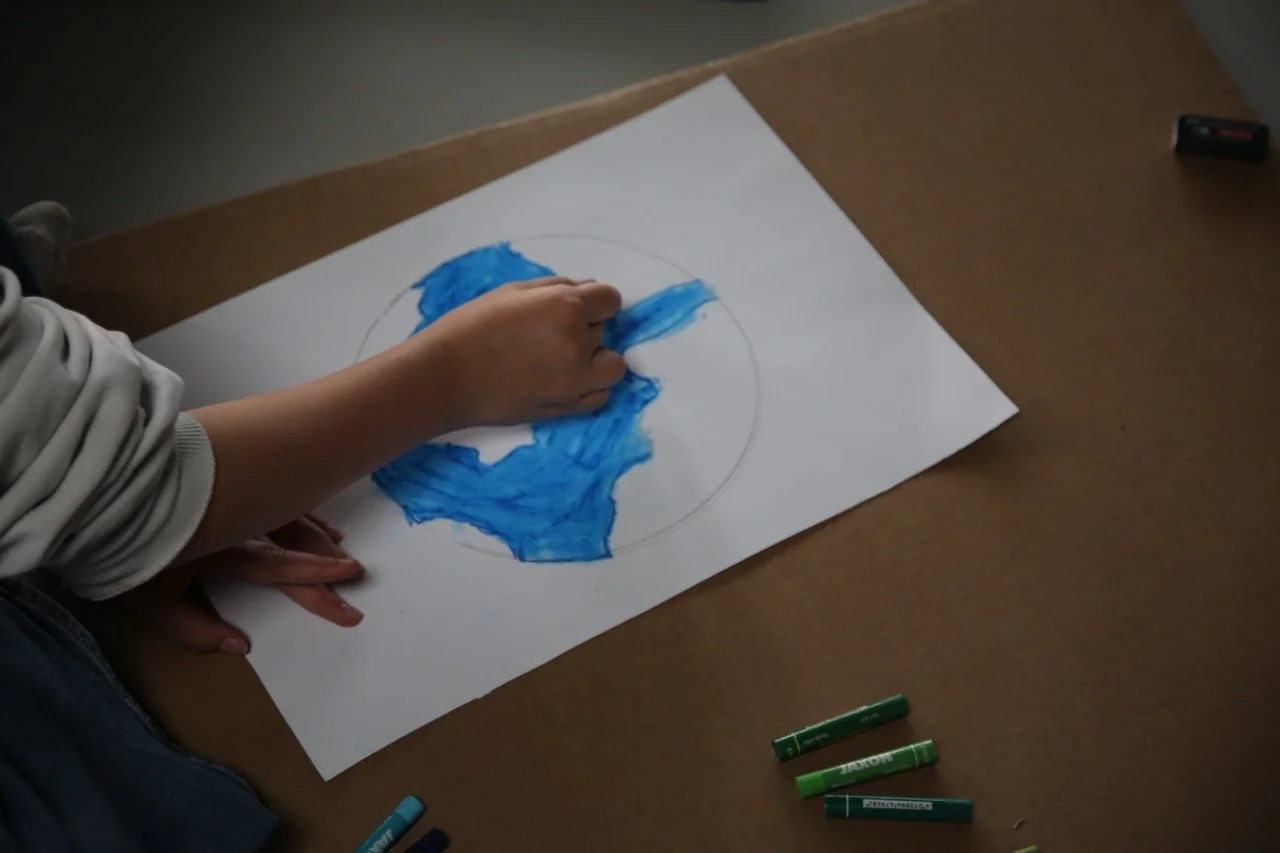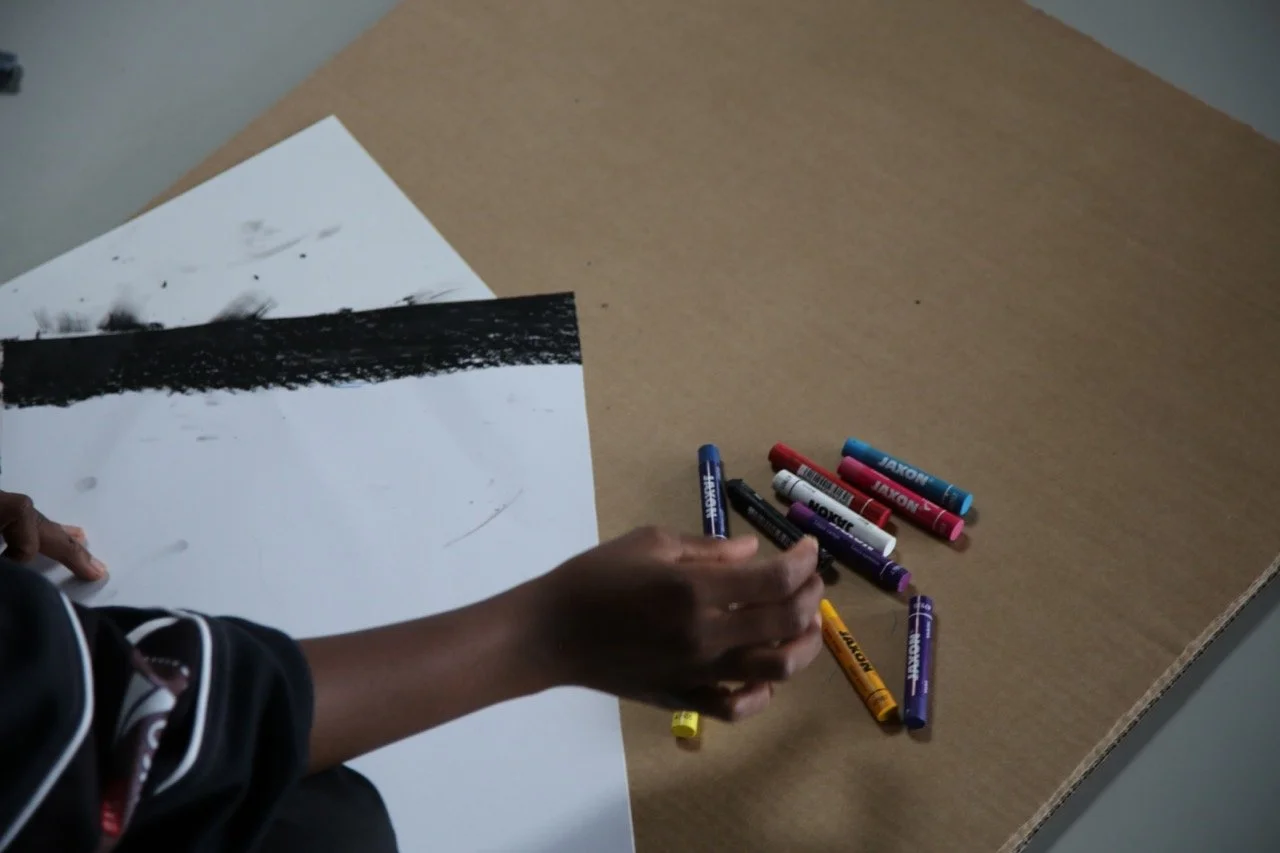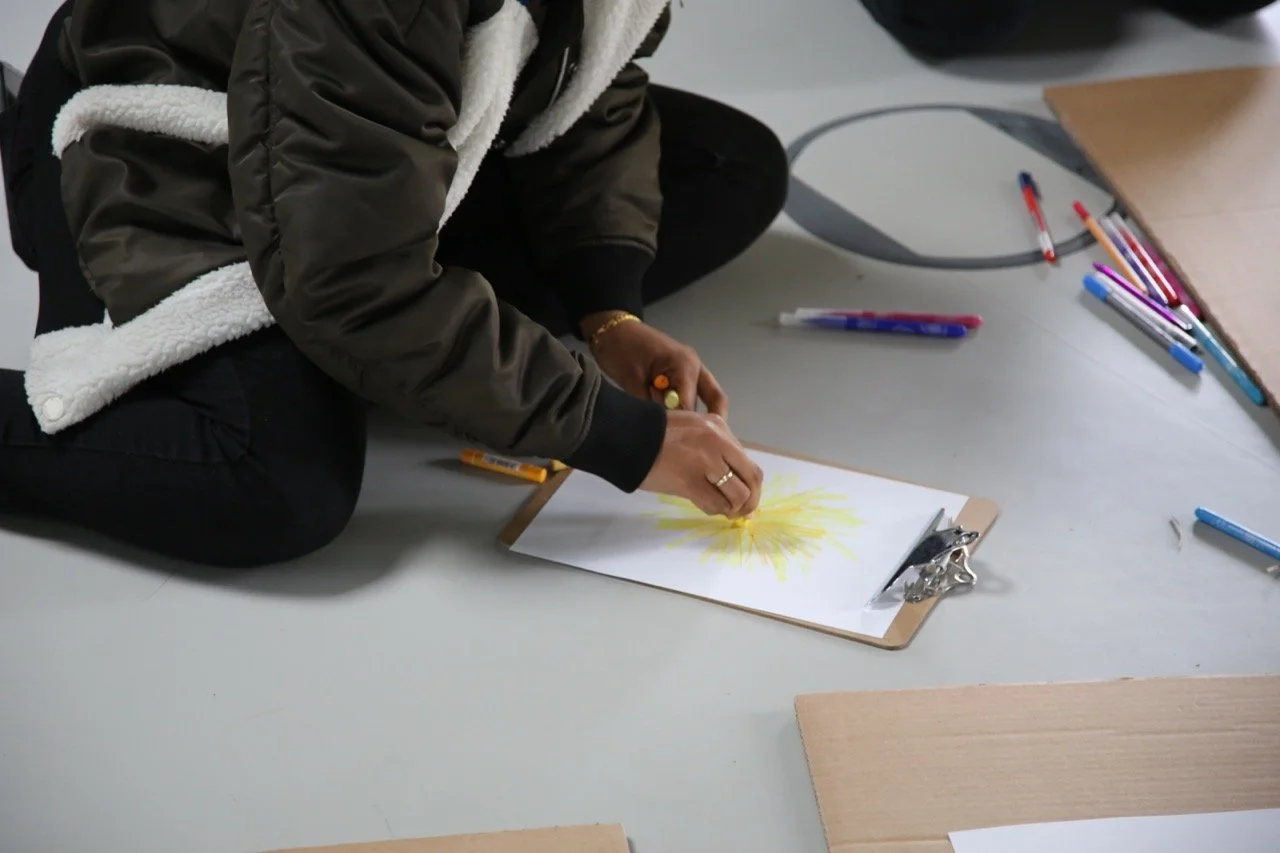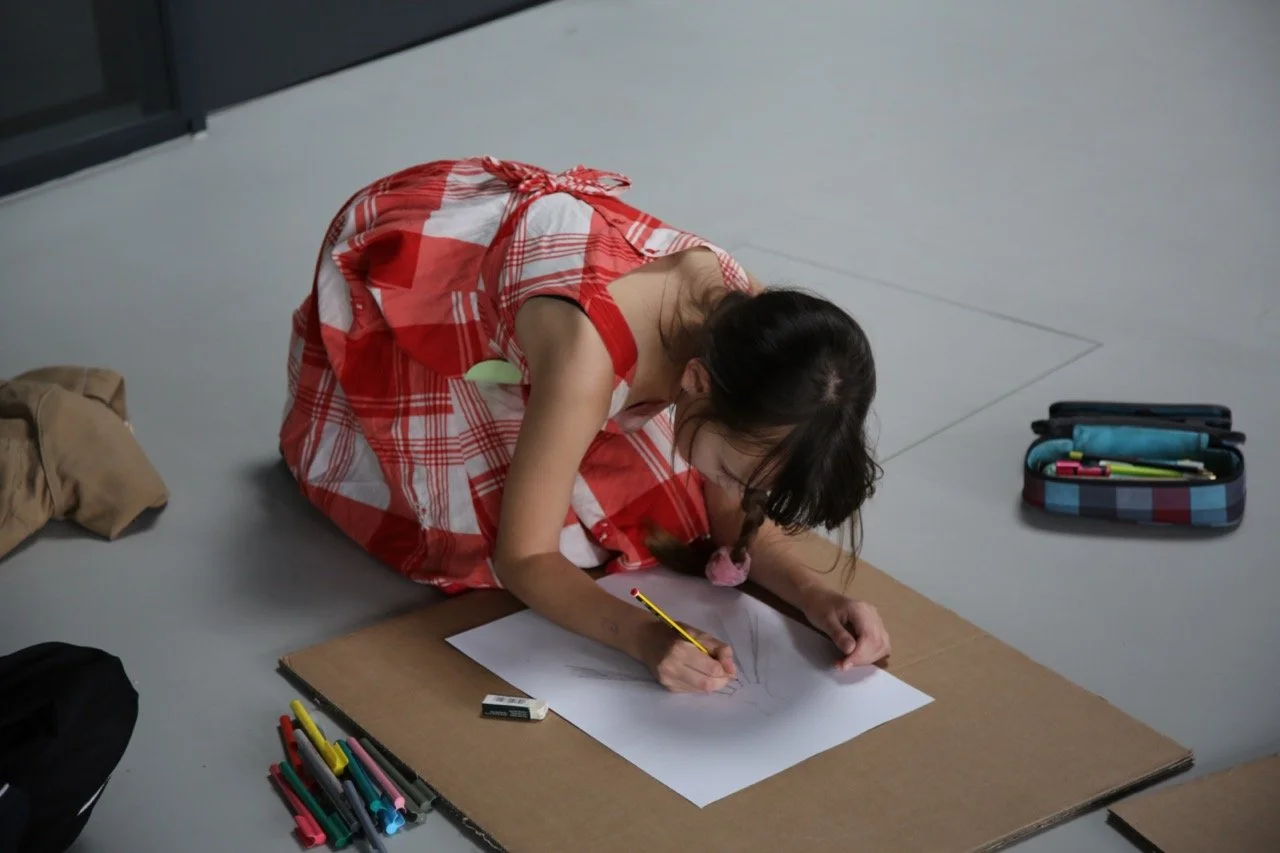Who am I? And where can I participate? With Lerato Shadi
Today, on a cold June day, the performance artist Lerato Shadi comes to us in the Ephra floor. She is wearing a blue and black patterned top. But her favourite colour for work seems to be red! Red is simply the best colour for her artworks, she tells us. Because we associate it with the human body – but also with love or violence.
Lerato uses red very often in her installations and video works. And her own body also plays an important role in her performative art. For example, she shows us a video in which she blows up balloons for six hours in an advertising company in Cape Town. Her breath only ever ends up in the balloons as she blows out. She spent six months doing yoga exercises in preparation for this. She often derives the ideas for her artworks from questions. How does an artist spend her time in contrast to other people? was one of the questions Lerato asked herself for the balloon performance. And: What do you use your time for?
Batho ba Me, Neon light installation, Kunstverein Hamburg (2020)
It is important to Lerato to ask many questions in her art. And so one of her most famous installations shows a question that is (of course) emblazoned on a red canvas: "Are we the people?". The word "Are" and the "?" in neon yellow light tubes frame the black lettering "We the people" printed on the canvas. Lerato explains to us that the constitutions in the USA and in her home country South Africa begin in the exact same way: "We the people..." However, she wonders whether this really means all people and whether everybody is allowed to have a say. For example, the right to vote, which gives people a voice, was only available to white men for a long time. Women and People of Colour were excluded. Rights for children are also something relatively new – that children are protected and represented by the government. It is important to Lerato that everyone is heard and understood and has a voice. After all, everyone is part of society! Then the world will be a better place if all voices really count, Lerato thinks.
In another installation, Lerato juxtaposes a portrait of her great-great-grandmother with a picture of herself (in other words, a self-portrait). However, this is not an image of the faces of both people in the classic sense. Instead of her face, Lerato shows her own signature as an artist juxtaposed to a “X” representing her great-great-grandmother. In this installation, she explains, she was interested in the question of education. Her great-great-grandmother could barely read or write. But she was intelligent, had good intuition and a lot of empathy. Lerato says that she herself learnt a lot from books, but would like to draw more knowledge from her body.
And so we should also connect our feelings with our head when we start making a self-portrait. Pictures are created with things other than our faces: Pictures that show the whole world, the sun or a beautiful dress. It is only when we look at the pictures that we realise how differently we all feel and perceive ourselves and how different the things are with which we identify with.






